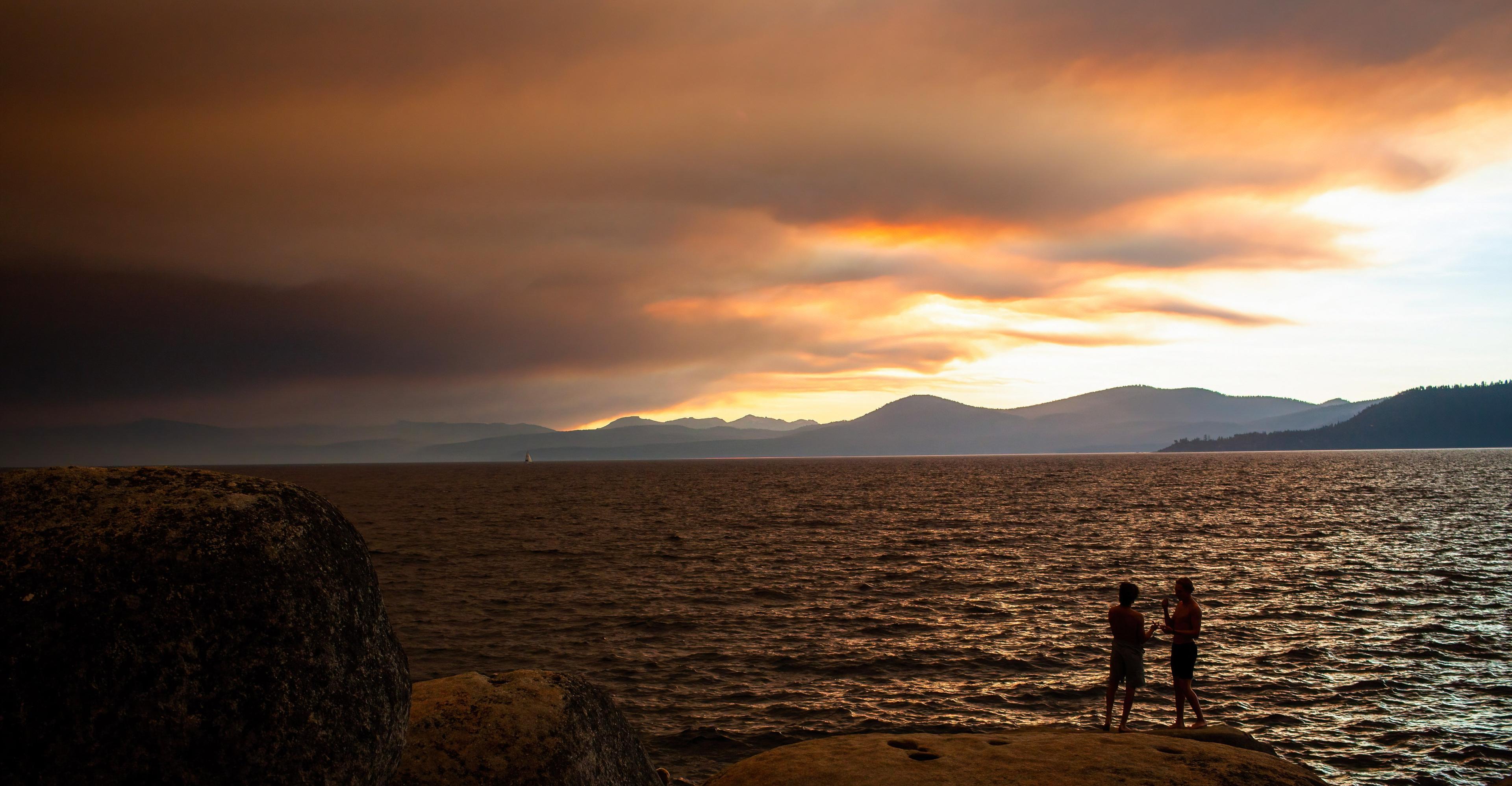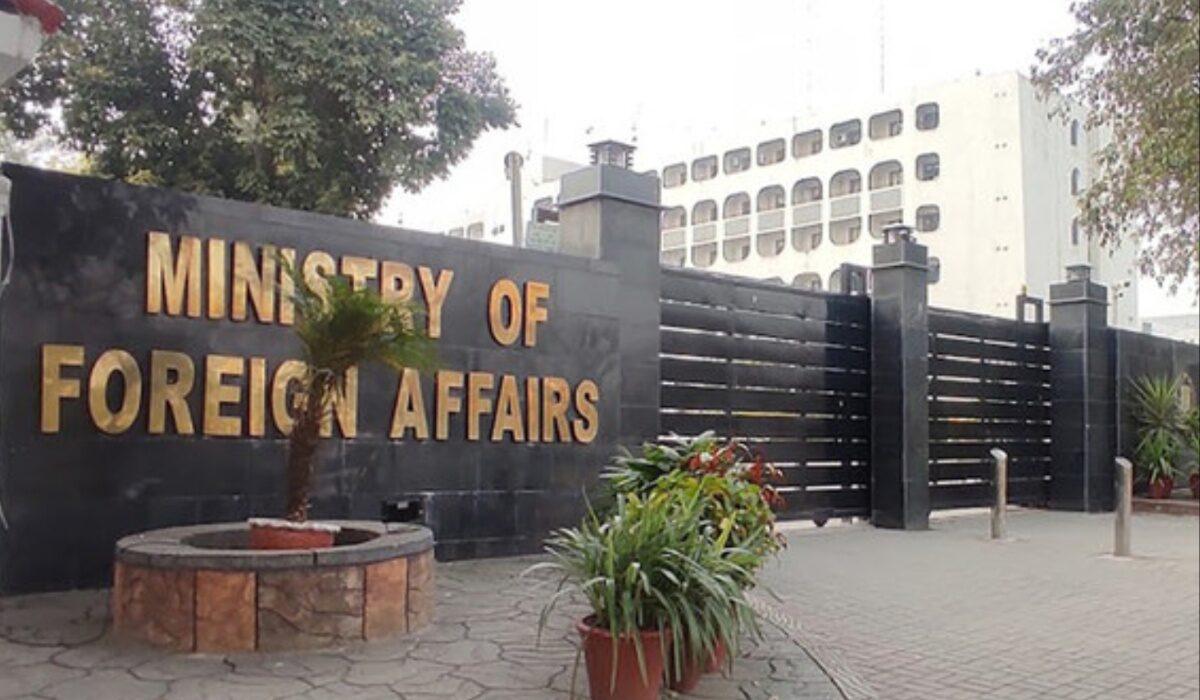Air pollution, farming, and tree planting is changing the planet’s color. Is that good for climate change?


Maybe you’ve heard: Earth, our planet, is not doing great. Tropical forests are getting cut down. Parking lots are replacing bird-filled grasslands. Climate change is fueling forest-razing wildfires. On the whole, natural, plant-filled habitats, seem to be disappearing.
Despite this destruction, scientists keep coming to an odd conclusion: The Earth is growing greener. Not green in the metaphorical “sustainable” sense, but in the literal color green.
In the last four decades, the extent of green vegetation — i.e., the amount of leaves in a given area — has substantially increased across the planet, according to a number of recent scientific studies based on satellite data. There’s actually more green space today, not less. And this “global greening” phenomenon is not just occurring on land. Large parts of the oceans are getting greener, too, research shows. Our blue planet, it seems, is increasingly a green planet.
Understanding Earth’s color is key to understanding Earth and our future on it. “Greenness” often corresponds to the planet’s ability to absorb carbon dioxide, the primary greenhouse gas that drives climate change. The more leaves, the more photosynthesis, a chemical reaction that gobbles up CO2. That’s the good news in global greening: It’s helping offset some of the impacts of climate change.
But there’s more to greening than meets the eye. The changing color isn’t so much a sign that forests and other ecosystems are regrowing but that humans are altering the environment on a truly planetary scale — often, with dire consequences.
:no_upscale()/cdn.vox-cdn.com/uploads/chorus_asset/file/25269947/modis_wonderglobe_lrg.jpeg)
Why Earth is getting greener
Much of what we know about our planet on a global scale comes from satellites. Some of them are equipped with high-tech sensors that measure different wavelengths of light. With help from computer models, these sensors can roughly approximate the amount of leaves in a given area on the ground. More “greening” means the ground has more leaves, typically because it has more plants, or those plants have more (or larger) leaves on them.
The global greening effect, which dates back to the 1980s or earlier, isn’t tiny. In one 2019 study published in the journal Nature, scientists found that the Earth had increased its green leaf area (i.e., the amount of leaves) by 5 percent in the last two decades. That’s equivalent to an area the size of the Amazon rainforest covered in a thin layer of leaves. A more recent paper, meanwhile, found that the world is not only leafier, but the rate of greening is actually accelerating across more than half of its land.
:no_upscale()/cdn.vox-cdn.com/uploads/chorus_asset/file/25269958/41893_2019_220_Fig1_HTML__2_.jpg)
These results are somewhat counterintuitive. In an age of deforestation, you might expect Earth to get browner or more gray, as satellites see stumps in place of trees and runways in place of wetlands. Where is all this green color coming from?
One explanation is air pollution. Carbon dioxide is not only a pollutant but a fertilizer — a key ingredient in photosynthesis that helps plants grow. Some farmers inject CO2 into their greenhouses to accelerate plant growth. But now we’re fertilizing plants on a global scale: In the last two centuries, NASA reports, humans have increased the CO2 content in the air by roughly 50 percent. All that extra CO2 is accelerating leaf growth, and satellites can see it.
Humans are also just growing more plants. The 2019 Nature study found that the dominant driver of recent global greening is a combination of more farming and, to a lesser extent, more tree planting. People are growing more crops on the same amount of land and turning barren patches of soil into verdant farms.
These trends are especially prominent in China and India. Together, these two countries account for roughly one-third of all greening, the study found.
“The intensification of agriculture that’s been happening in India over the past four decades is stunning,” said Joshua Gray, a geospatial scientist at North Carolina State University, who was not affiliated with the 2019 paper.
China, meanwhile, has planted tens of billions of trees, often in plots with just one species, over the last four decades, according to the country’s government. The idea behind this massive tree-planting campaign is, among other goals, to stop land from drying out, reduce erosion, and provide people with a source of income from timber.
Green can be good
Broadly speaking, a leafier planet can help the climate. Our oceans and lands, including forests, absorb more than half of the CO2 that countries spew into the air. These “carbon sinks” keep global warming from getting worse than it already is, and at least on land, they have been growing for several decades.
Global greening, Gray said, is one reason why the land sink has ballooned.
:no_upscale()/cdn.vox-cdn.com/uploads/chorus_asset/file/25269973/ImageWall6_1600x1200_359.jpg)
In the ocean, however, greening is far more mysterious; it’s not clear why the sea is getting greener or what that means for the climate. The observed shift in color is likely caused by phytoplankton, a tiny plant-like organism that, like plants, absorbs CO2. Greener seas might mean there’s simply more phytoplankton in some areas. Alternatively, there could be a shift in the phytoplankton community toward species that produce more green pigment, according to B.B. Cael, a scientist at the National Oceanography Centre who has studied ocean greening. The difference matters because it determines how much carbon the oceans can absorb.
Better satellite data will help figure some of this out. That’s one reason why NASA is expected to launch a satellite called PACE, which will measure ocean color to better understand how plankton communities influence Earth’s climate.
:no_upscale()/cdn.vox-cdn.com/uploads/chorus_asset/file/25269942/GSFC_20230617_PACE_019382_2000w.jpeg)
The big problems behind the green sheen
There’s a lot that color alone leaves out, such as what that “green” is made of.
To sensors on a satellite, a rainforest in Indonesia and a nearby monoculture of coffee or rubber trees look similar. They both appear green. Yet these two landscapes are dramatically different: The rainforest is home to orangutans and rare plants and helps regulate the local climate, whereas the plantation is relatively devoid of life. Measurements of color alone fail to capture these important differences.
More than that, they can mask ecosystem destruction, said Robin Chazdon, a tropical ecologist and part-time scientist at the World Resources Institute, an environmental group. Companies commonly tear up native forests to plant commercial crops. Satellite data alone struggles to capture these changes in land use.
“It’s glossing over the reality of what’s actually happened,” Chazdon said of global greening measurements.
Greening caused by tree planting — common in China and India — can also be problematic, she said. Planted forests often comprise just one or two tree species and don’t offer much in the way of biodiversity or other benefits, like erosion control, she said. In some cases, the trees eventually die.
The growth in green farmland, similarly, has some pretty serious consequences. Industrial farms not only replace native ecosystems but require huge amounts of water and chemicals, such as fertilizers and pesticides (which are known to harm humans and ecosystems). Consider the Imperial Valley of Southern California. Once a desert, it’s now covered in vast stretches of farmland. Those farms have turned the region green — and it’s visible from space — yet they’ve done so, in part, by draining the Colorado River and fueling a water war in the West.
What’s more is that while plants absorb carbon, industrial cropland typically produces more carbon emissions than it absorbs over the long term. Making nitrogen fertilizer and other agrochemicals requires a huge amount of energy, which typically comes from fossil fuels. Plus, much of the carbon absorbed by plants on a farm gets reemitted into the environment after they’re harvested.
:no_upscale()/cdn.vox-cdn.com/uploads/chorus_asset/file/25269988/NASA_Crop_Circles_Kansas.jpeg)
The other problem: While CO2 fertilization can make some crops grow faster, research has also found that it can decrease their nutritional value — such as the concentration of protein, and minerals like calcium and magnesium — for a number of complicated reasons. So pumping CO2 into the air means more but often less-nutritious vegetation (and globally, more than 2 billion people are nutrient-deficient).
So, yes, greening is complicated. It’s not inherently good. Sometimes it’s very bad. Context, it turns out, matters a lot.
If there’s anything we can glean from color alone it’s the scale of human impact. It’s not that nature is healing — that forests are growing back because we left them alone — but that we have drastically changed the atmosphere, the ground, and the ocean. We have changed the very look of our planet, and it’s visible from space.
Sabalenka named WTA Player of the Year for second straight season
- 9 hours ago
Bondi gunman’s Indian family had no knowledge of his radicalisation, Indian police say
- 10 hours ago
AI boom seen lifting chipmaking equipment sales 9pc to $126bn in 2026
- 6 hours ago
Former Punjab CM Manzoor Wattoo passes away at 86
- 10 hours ago
Tagic Army Public School (APS) Peshawar incident completes 11 painful years
- 5 hours ago

Gold prices dip per tola in Pakistan, global markets
- 9 hours ago
Pakistan qualify for semi-final of under 19 Asia Cup cricket
- 6 hours ago

Zillow’s short-sighted move to overlook climate risk
- 12 hours ago

Assailants kill cop, brother in gun attack in KP’s Lakki Marwat
- 6 hours ago

Why Republicans in Congress are turning against Trump
- 21 hours ago
Bollywood studio Bhansali Productions to sell future film music to Saregama India
- 9 hours ago

Young Leaders Conference 2025 highlights social stewardship on day two
- 7 hours ago




